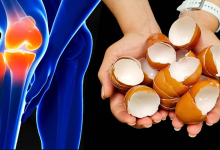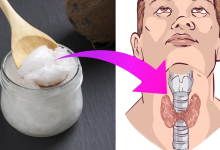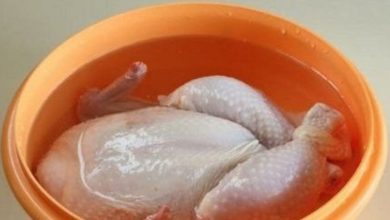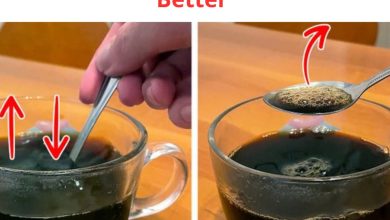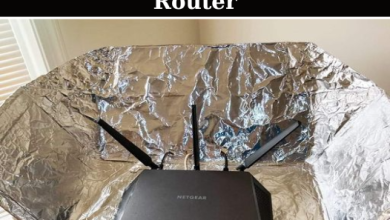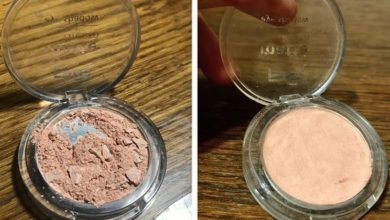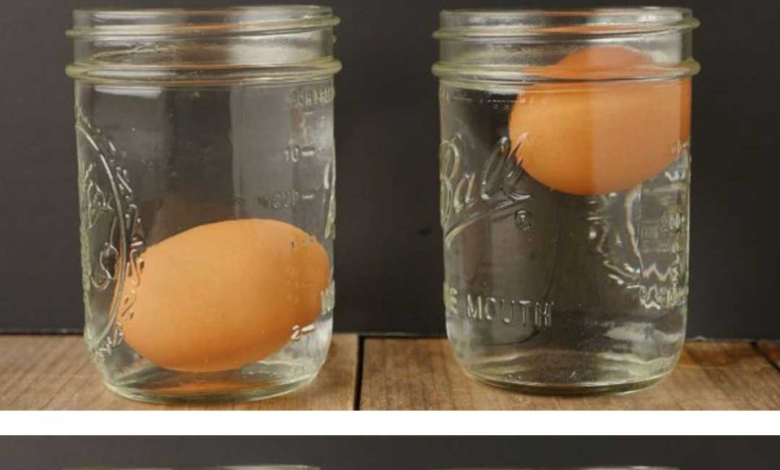
In an age where most of our food comes pre-packaged and ready for consumption, it can be easy to overlook the importance of checking the freshness of our groceries, especially with something as staple as eggs. Eggs are a versatile and nutritious component of many recipes, but using a bad egg can ruin a dish or, worse, make you sick. As more people return to cooking at home and exploring traditional methods, reliable ways to test egg freshness are being celebrated. One such method comes from Nana—a simple yet effective trick passed down through generations. Let’s delve into this easy technique that ensures you always have the freshest eggs at your table.
The Importance of Egg Freshness
Fresh eggs are crucial not only for their culinary quality but also for their safety. Fresh eggs have better texture, taste, and nutritional content compared to older ones. In baking, they contribute to better rising and structure. From a safety perspective, consuming stale or bad eggs can lead to foodborne illnesses, such as salmonella. This makes it essential to differentiate between fresh and not-so-fresh eggs. Understanding the importance of egg freshness can prevent culinary disasters and protect your health.
Nana’s Simple Trick for Testing Egg Freshness
Nana’s trick for testing egg freshness is delightfully simple and requires no special equipment—just a bowl of water. This age-old method involves placing the egg in water and observing its behavior. The insight behind this technique lies in the natural changes that occur inside an egg over time. As eggs age, the small air pocket inside them grows larger. This change can be detected easily using the water test.
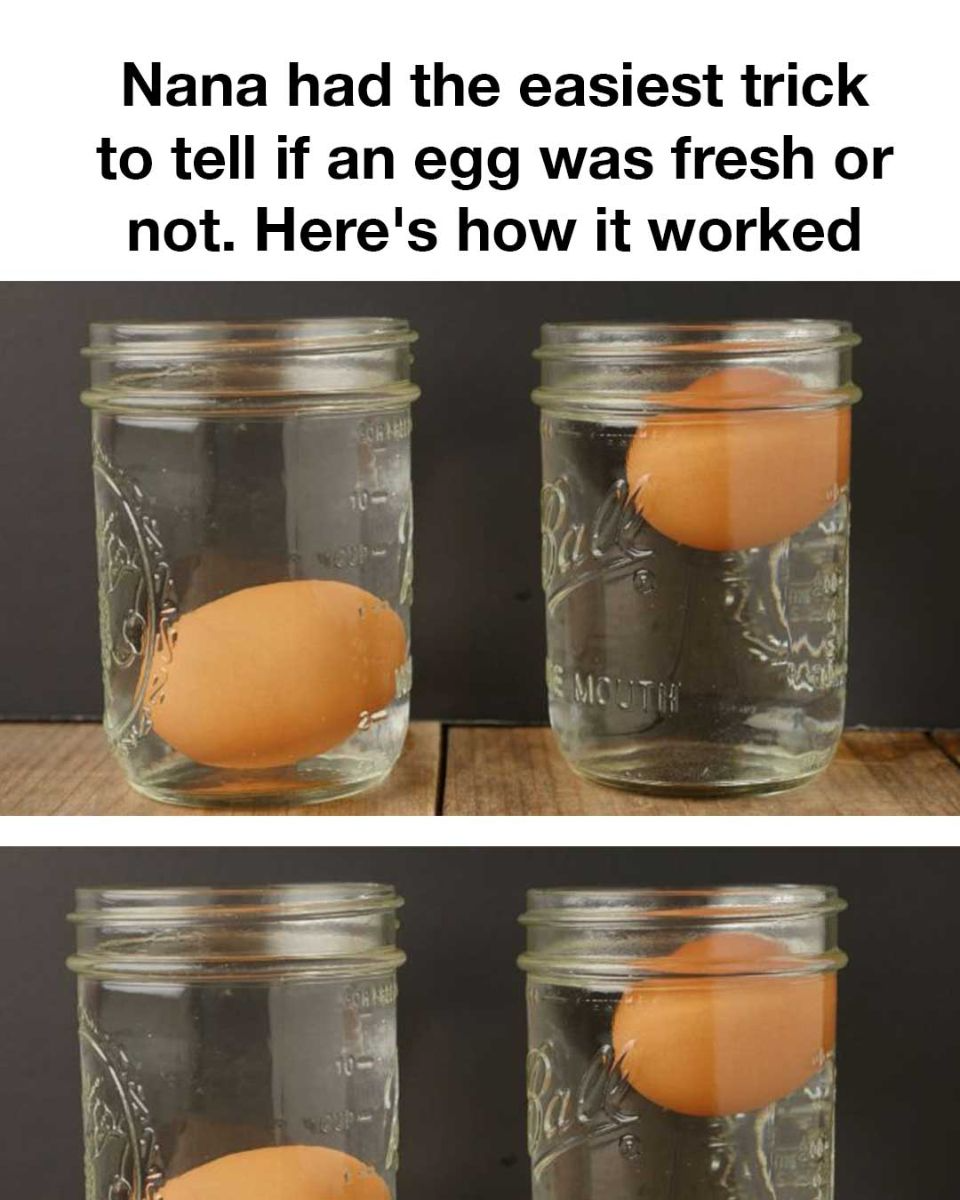
Step-by-Step Guide to Nana’s Egg Freshness Test
Here’s how you can perform Nana’s egg freshness test at home:
1. Fill a bowl with cold water, ensuring it’s deep enough to completely submerge an egg.
2. Gently place the egg in the bowl of water.
3. Observe the position of the egg: – If it sinks to the bottom and lays flat on its side, it is very fresh. – If it sinks but stands upright on the bottom, it is still safe to eat but not as fresh and should be used soon. – If it floats to the top, it is no longer fresh and should be discarded. This simple check can be done in seconds and provides a clear indication of your egg’s freshness.
Why Nana’s Method Works
Nana’s method works because of the changes in the egg’s air cell. As an egg ages, the contents of the egg contract and moisture evaporates through the porous shell, causing the air cell to expand. This increased air pocket affects the egg’s buoyancy. Fresh eggs have a smaller air cell, making them denser, so they lay flat on the bottom. Older eggs have a larger air pocket, which makes them more buoyant and causes them to stand or float. This physical principle is the science behind the simplicity of Nana’s test.
Comparing Other Egg Freshness Testing Methods
While Nana’s water test remains popular, several other methods exist to check egg freshness: – Candling: Shining a light through the egg to observe internal structures, commonly used in agriculture. – Crack Test: Cracking the egg open to inspect the yolk and whites; fresh eggs have firm, well-rounded yolks and thick whites. – Shake Test:
Shaking the egg near your ear; fresh eggs should not produce sound, while older eggs might slosh due to thinner whites. Though effective, some of these methods require experience or equipment, whereas Nana’s water test remains straightforward and accessible to everyone.
Scientific Explanation Behind the Trick
The scientific basis of Nana’s egg freshness test lies in the egg’s anatomy and changes over time. Eggs have a porous shell that allows air to enter and moisture to leave. The air cell increases as an egg ages, causing it to become more buoyant. The egg’s protein structures also thicken initially and then deteriorate, becoming more liquid over time. Fresh eggs have a balanced composition that makes them denser and less likely to float. The simplicity of using water to detect these changes showcases basic principles of chemistry and physics in action.
Common Misconceptions About Egg Freshness
There are several myths regarding egg freshness: – Eggs that have minor cracks should be discarded immediately: While true for cracked eggs that float, minor cracks can be okay depending on storage. – A cloudy egg white indicates spoilage: Fresh eggs have cloudy whites due to carbon dioxide not yet escaping. – All eggs with spots are bad: Blood or meat spots are harmless and can occur in very fresh eggs. It’s crucial to differentiate between these misconceptions and factual indicators, ensuring you handle your eggs correctly.
Frequently Asked Questions About Egg Freshness
Here are some common questions:
1. How long do eggs stay fresh? Properly stored, eggs can stay fresh for 3-5 weeks.
2. Can I still use eggs past the expiration date? If they pass the float test, they are likely still safe but should be used soon.
3. Should eggs be stored in the refrigerator? Yes, refrigeration significantly extends freshness.
4. What should I do with eggs that float? Discard them, as they are no longer fresh. Understanding these FAQs can help you better manage and use your eggs.
Conclusion: Trusting Nana’s Time-Tested Trick
Nana’s egg freshness test stands the test of time due to its simplicity and reliability. In a world where food safety is paramount, this method requires nothing more than water and keen observation. By incorporating Nana’s trick into your routine, you ensure the eggs you use are fresh, enhancing both the safety and quality of your meals. Trust in this time-honored technique and enjoy the peace of mind that comes with every egg you crack.
Source: cooktopcove
